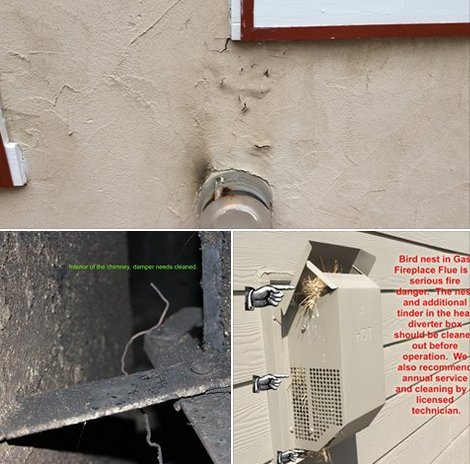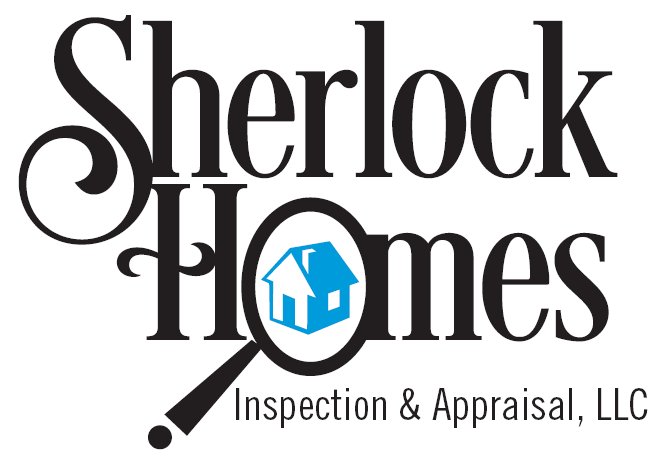With fall just around the corner we wanted to remind homeowners now is the time to have your fireplace cleaned and serviced by a licensed technician.
 At Sherlock Homes Inspection & Appraisal, LLC we see dozens of fireplaces monthly. Very rarely are they cleaned properly and ready for operation when the real estate transaction is complete.
At Sherlock Homes Inspection & Appraisal, LLC we see dozens of fireplaces monthly. Very rarely are they cleaned properly and ready for operation when the real estate transaction is complete.
Here are just a few tips for keeping your fireplace safe from InterNACHI:
“More than one-third of Americans use fireplaces, wood stoves, and other fuel-fired appliances as primary heat sources in their homes. Unfortunately, many people are unaware of the fire risks when heating with wood and solid fuels.
Heating fires account for 36% of residential home fires in rural areas every year. These fires are often due to creosote buildup in chimneys and stovepipes. All home heating systems require regular maintenance to function safely and efficiently.
InterNACHI encourages homeowners to practice the following fire safety steps to keep those home fires safely burning. Remember, fire safety is a personal responsibility.
– Keep Fireplaces and Wood Stoves Clean
– Have your chimney or wood stove inspected and cleaned annually by a certified chimney specialist.
– Keep the area around the hearth clear of debris, decorations, and flammable materials.
– Leave glass doors open while burning a fire. Leaving the doors open ensures that the fire receives enough air to complete combustion, and it keeps creosote from building up in the chimney.
– Close glass doors when the fire is out to prevent air from the chimney opening from getting into the room. Most glass fireplace doors have a metal mesh screen, which should be closed when the glass doors are open. This mesh screen helps keep embers from getting out of the fireplace area.
– Always use a metal mesh screen with fireplaces that do not have a glass fireplace door.
– Install a stovepipe thermometer to help monitor the flue temperature.
– Keep air inlets on wood stoves open, and never restrict the air supply to a fireplace. Otherwise, creosote may build up, which could lead to a chimney fire.
– Use fire-resistant materials on the walls around a wood stove.
– Safely Burn Fuels
– Never use flammable liquids to start a fire.
– Use only seasoned hardwood. Soft, damp wood accelerates creosote buildup. In pellet stoves, burn only dry, seasoned wood pellets.
– Build small fires that burn completely and produce less smoke.
– Never burn cardboard boxes, trash, or other debris in your fireplace or wood stove.
– When building a fire, place logs at the rear of the fireplace on an adequate supporting grate.
– Never leave a fire in the fireplace unattended. Extinguish the fire before going to bed or leaving the house.
– Allow ashes to cool before disposing of them. Place ashes in a tightly covered metal container, and keep the ash container at least 10 feet away from your home and any other nearby buildings. Never empty the ash directly into a trashcan. Douse and saturate the ashes with water.
Protect the Outside of Your Home:
– Stack firewood outdoors at least 30 feet away from your home.
– Keep the roof clear of leaves, pine needles, and other debris.
– Cover the chimney with a mesh screen spark arrester.
– Extend all vent pipes at least three feet above the roof.
– Remove branches hanging above the chimney, flues and vents.
Protect the Inside of Your Home:
– Install smoke alarms on every level of your home, and inside and outside of each sleeping area. Test them monthly, and change the batteries at least once a year. Consider installing the new long-life smoke alarms.
– Provide proper venting systems for all heating equipment.”
I also recommend:
– Install CO alarms on every level of the home. Test them monthly, and change the batteries at least once a year.
– Have all Fireplaces, Chimneys, and Flues inspected and cleaned annually by a licensed technician to ensure safe operation.
As always if you have any questions or concerns we are always here to help. You may contact a Certified Professional Inspector @ Sherlock Homes Inspection services by calling: (970) 481-7977.
